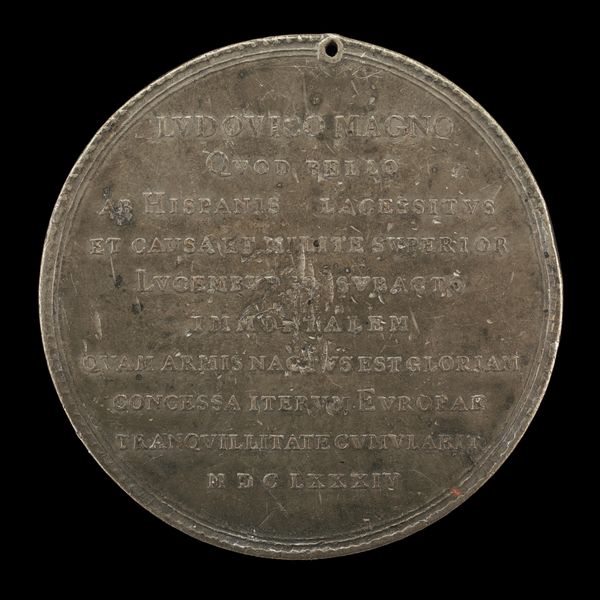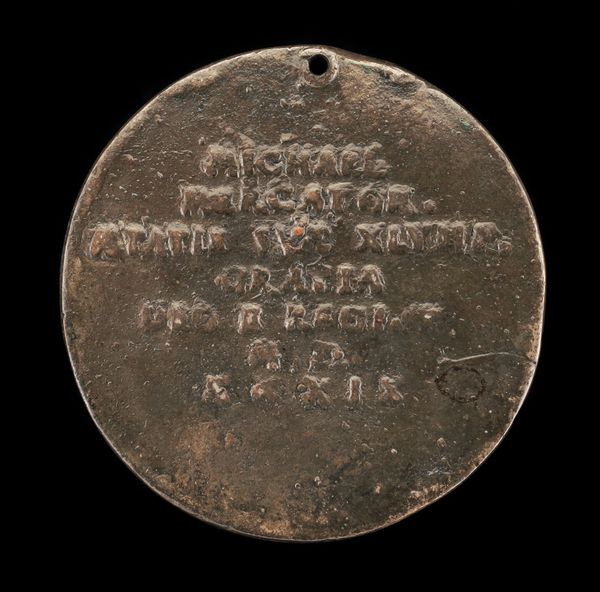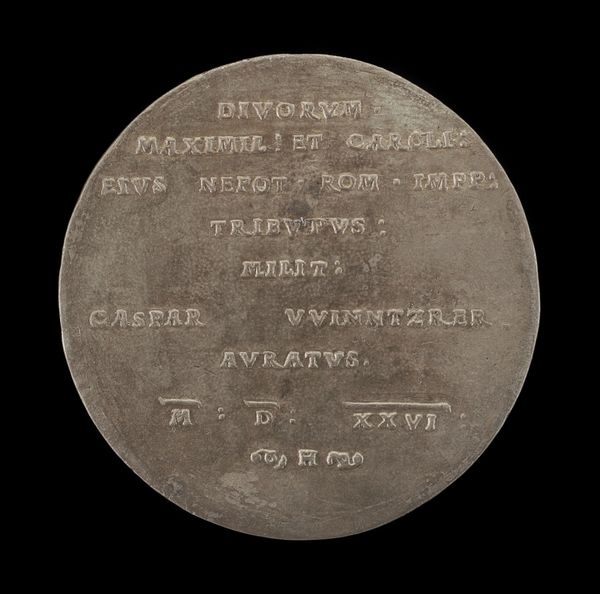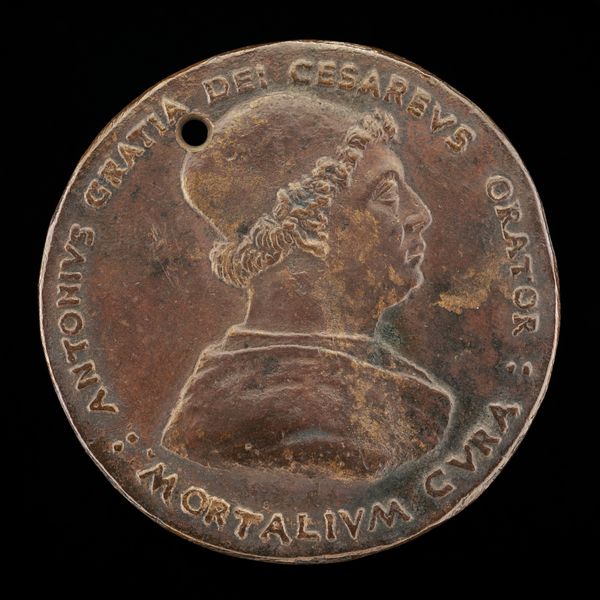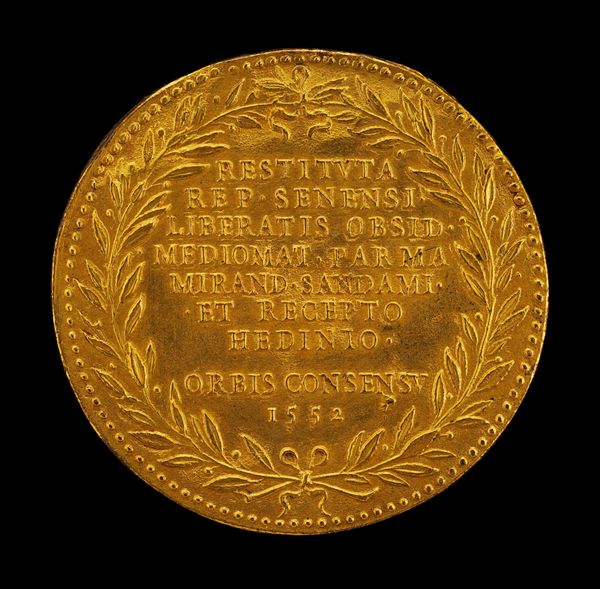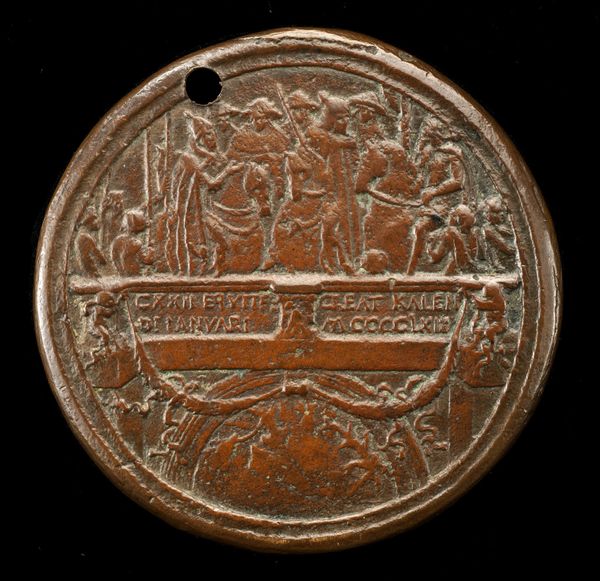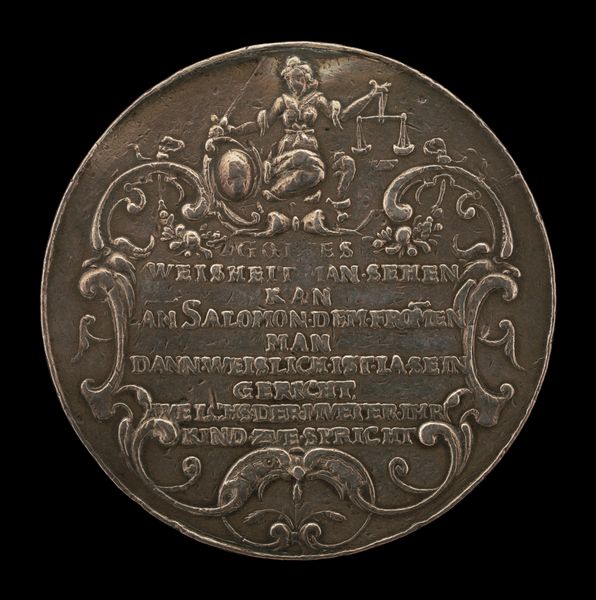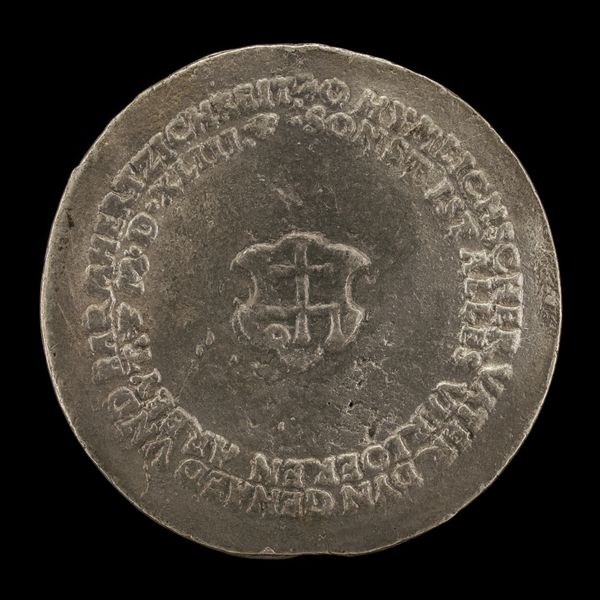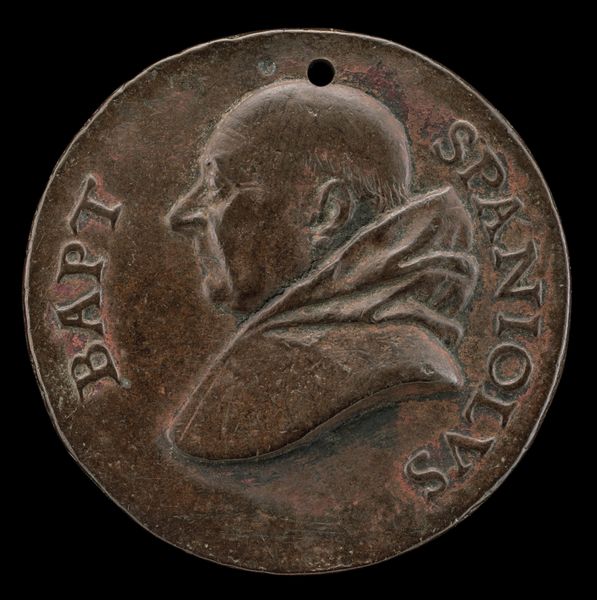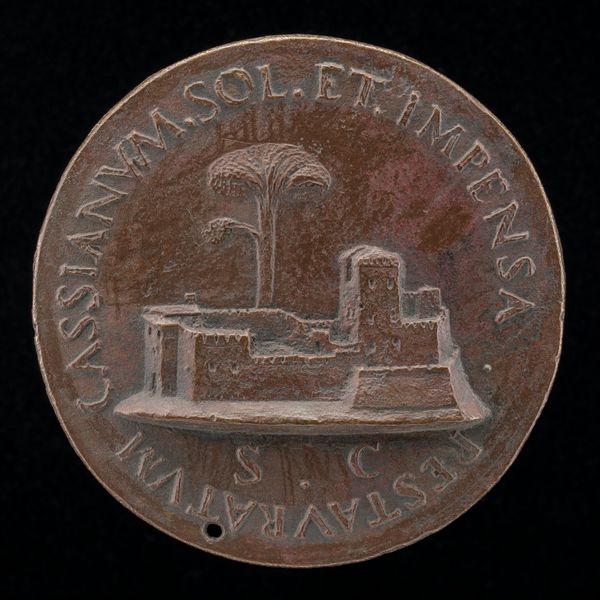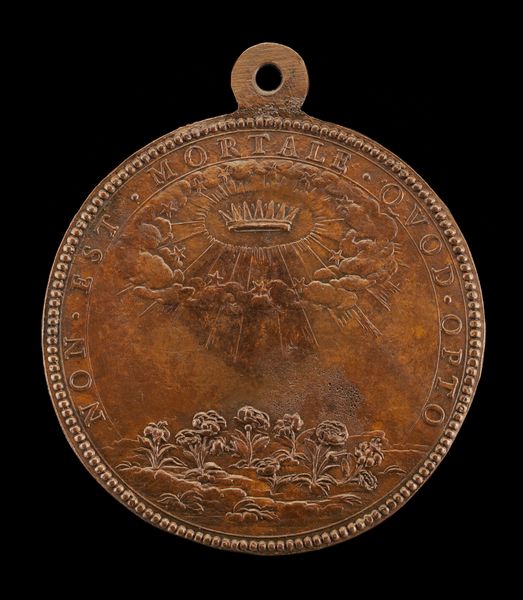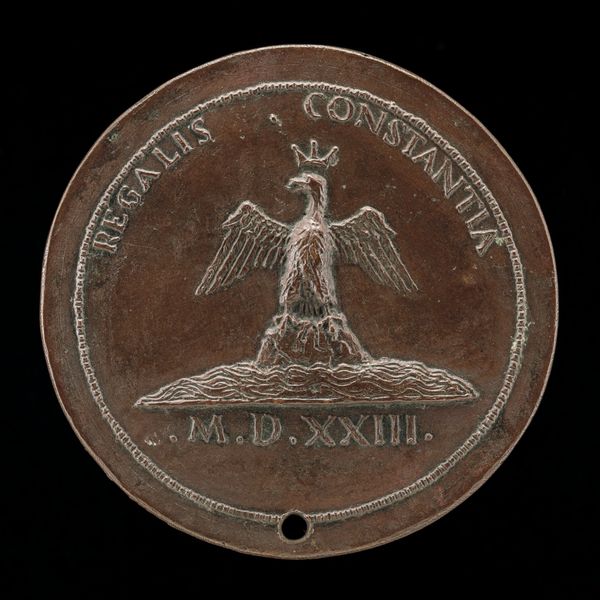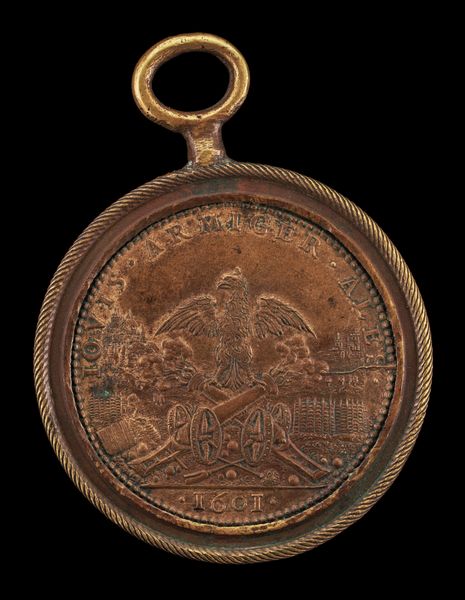![Inscription [reverse] by Friedrich Hagenauer](/_next/image?url=https%3A%2F%2Fd2w8kbdekdi1gv.cloudfront.net%2FeyJidWNrZXQiOiAiYXJ0ZXJhLWltYWdlcy1idWNrZXQiLCAia2V5IjogImFydHdvcmtzLzE1YzNmNmZjLWU4MmYtNGUwMS04NmY0LWM3NmE0YjU4YjEzMi8xNWMzZjZmYy1lODJmLTRlMDEtODZmNC1jNzZhNGI1OGIxMzJfZnVsbC5qcGciLCAiZWRpdHMiOiB7InJlc2l6ZSI6IHsid2lkdGgiOiAxOTIwLCAiaGVpZ2h0IjogMTkyMCwgImZpdCI6ICJpbnNpZGUifX19&w=3840&q=75)
carving, print, metal, relief, bronze, sculpture, engraving
#
medal
#
carving
# print
#
metal
#
relief
#
bronze
#
sculpture
#
engraving
Dimensions: overall (diameter): 4.79 cm (1 7/8 in.) gross weight: 26.77 gr (0.059 lb.) axis: 12:00
Copyright: National Gallery of Art: CC0 1.0
Curator: This object is a bronze medal known as "Inscription [reverse]," created around 1540 by Friedrich Hagenauer. Its dimensions are quite intimate, inviting close examination. Editor: Oh, instantly, it feels ancient. Like a whispered secret worn smooth by time and touch. A tarnished mirror to long-gone intentions. Curator: Indeed. Notice the circular composition; it emphasizes the cyclical nature of the inscription, drawing the eye from one line to the next, reinforcing the linguistic structure and impact. Editor: The font feels like each letter was wrestled out of the metal. Raw, unpolished… but, strangely elegant, as if carved by someone with a blacksmith’s hands and a poet’s heart. The light catches on some lines more than others, deepening shadows which makes it seem to heave forward with age. Curator: The material itself, bronze, imbues the work with significance. Bronze was commonly used to signify permanence, strength, and a link to classical antiquity. Editor: Thinking about it as 'sculpture', though... a flat, pocket-sized sculpture. Meant to be held, contemplated. Almost talismanic. I wonder what this little amulet whispers of, with its Latin phrases that may elude me now, but maybe the aura transcends such concrete meaning? Curator: Semiotics plays a role. The Latin inscription—though perhaps obfuscated today—would have conveyed a clear message to its contemporary audience. Its formal presence alone signals knowledge, power, and perhaps a hidden agenda accessible only to a select few. Editor: True... maybe the message is less for our specific, decipherable understanding and more about its timeless impact. That somebody held this, valued this, and wanted this specific statement—whatever it may actually be!—near. It hints at what humanity found important, almost half a millennium back. Curator: A keen observation. And what else? The surface shows what could be imperfections, or a character of use and time. It adds texture, enriching the dialogue between medium and concept, where each mark represents material and temporal engagement. Editor: To think all of those interactions it had—with fingers and pockets, conversations, sunlight, and shadowed corners—are still, somewhat, present, embedded in the object! Makes me want to pick it up. Look at its reflections in my own palms. To complete, even centuries on, that tactile equation between artwork and holder... Curator: Exactly! By acknowledging that "Inscription [reverse]" as a locus of interwoven ideas—historical, artistic, material—we begin to appreciate the medal as much more than just a simple surface decoration. Editor: I think you have given me a deeper appreciation. It isn’t just bronze with some etched words. The medal transforms into something that is far more deeply evocative. A meditation piece… for anyone fortunate enough to spend a minute to appreciate what they behold.
Comments
No comments
Be the first to comment and join the conversation on the ultimate creative platform.
